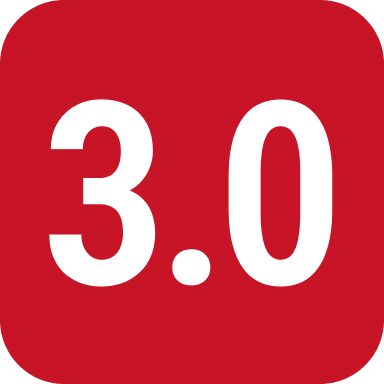
Comparing the Standout system vs the CliftonStrengths system can offer tremendous guidance to individuals wanting to start a self improvement journey, or simply wishing to bolster their careers.
By understanding your top strengths, whether you are a top executive or a newly employed college student, is crucially important for self-development. These abilities can help you identify an ideal career, improve your communication or customer service skills, and boost your confidence.
However, with so many strength assessments on the market, identifying the right one for you can be confusing and overwhelming. In this article, we will highlight 2 amazing assessments: Standout and StrengthFinder, discussing their pros, cons, and overview.
Methods Compared: The 9 Type vs. The 34 Type
On the surface, the StrengthsFinder by CliftonStrengths may seem extremely similar to the Standout assessment. They are both tests that help people identify their innate talents, after all.
However, once you dig deeper, you will see they are not exactly the same. For instance, the tests categorize individuals into different groups.
If you take the CliftonStrengths test, you are assigned some (depending on which version of CliftonStrengths, from 5 to all 34) of 34 total special talents they test for. You will see which of these abilities dominate your personality.
The Standout test has 9 main strengths roles. With your results, you get insights into your top 2 natural strengths. Like with the StrengthsFinder, understanding these top qualities allows you to more effectively pursue self-improvement.
Compared to HIGH5 Test
The HIGH test is another fantastic option for those trying to understand their strengths profile. The HIGH5 test consists of 20 key strengths. These strengths are further subdivided into 4 overarching categories (doing, feeling, motivating, and thinking).
Compared to the Standout assessment, the HIGH5 is more in-depth and backed by additional research. The Standout test is newer and has broader categories without subdivisions.
Structures Compared: 4 Strength Domains vs 2 Top Roles
Another substantial difference between Standout and StrengthsFinder is the overall structure of the assessment.
If you choose to take the Standout assessment, only your top 2 strength roles are revealed. This allows you to dig deeper into these two strengths and get very focused results. However, it also limits how much you learn about your general abilities, and how your strengths interact.
On the other hand, the StrengthsFinder test covers more of your unique strengths. If you choose to take an upgraded version of the test, you can even get access to rankings for all 34 strengths included in the test. This gives you a fantastic overview of your general strengths profile, but it can also be overwhelming to understand.
Compared to HIGH5 Test
The HIGH5 test is very balanced. It provides individuals with fantastic insights into 20 specific strengths. The test gives you specific insights into each strength while ensuring the language is accessible and easy to understand.
The HIGH5 has fewer categories than StrengthsFinder, which makes it easier to process and more specific for each individual strength.
However, HIGH5 has more categories than StandOut, making it an overall more specific test. HIGH5 is also more widely recognized.
What Do Test Results Tell You?
One of the most exciting parts of taking any assessment is receiving your results. Whether you take the Standout or the StrengthFinder, you can acquire actionable insights into your career and personal lives.
Nonetheless, the results you get from these assessments will not be identical. For instance, the results of the StrengthsFinder will tell you about your personal strengths. These are the skills and qualities that help you achieve your goals and help you throughout your career.
By taking the Standout assessment, you get insights into personal recommendations. The test will give you some insights into how your strengths are typically utilized, and how you can incorporate them into your everyday life.
Compared to HIGH5 Test
The HIGH5 test results are comprehensive. By understanding your top 5 strengths, you can get a clear idea of how these strengths are applied to the real world, and which abilities help you stand out.
This information is highly useful when applying for a job, trying to take your career to the next level, and ensuring you make the most of your personal relations.
These insights can also be garnered from the StrengthsFinder or StandOut test, but they are often more overwhelming (StrengthsFinder) or overly simplified (StandOut) compared to the HIGH5.
How Many Strengths Are There in the StandOut Test?
The StandOut test includes a total of 9 strength roles. Your results, however, will only include your top 2 abilities.
In reading that, you might be thinking that does not seem very specific or in-depth. In one sense, you would be correct. StandOut is specifically made to be easily understood and simple. This means limiting the excess information you receive.
Nonetheless, this limited information could be a con of this test, if you would like to maximize how much you learn about yourself and do not mind the time that takes.
How Accurate is the CliftonStrengths (Formerly StrengthsFinder)?
One of the primary concerns test-takers tend to have with online strengths assessments centers around their accuracy. Often, these tests have limited scientific backing, and are based on unsound psychological ideas.
However, the StrengthsFinder by CliftonStrengths is not one of these unsound tests. In fact, it is backed by significant research. It was developed through the revolutionary research of psychologist Dr. Donald O. Clifton, and has been improved upon ever since.
This does not mean the test is without its flaws. As a subjective self-reported test, it depends on your self-reflections to determine results. If you are not honest or simply do not know the answer to a question, results may be skewed.
Thus, as with any test, StrengthsFinder is not perfect. But, if you answer the questions honestly and thoughtfully, you can gain accurate insights into your abilities.
Compared to HIGH5 Test
The HIGH5 test and StrengthsFinder are very similar assessments. Both provide insights into a wide variety of strengths, are trusted by millions of individuals, and have a substantial amount of research backing.
Just like CliftonStrengths has data supporting it, so does the HIGH5. The test is highly consistent, with about 81% of people receiving the same results 6 months apart (1). Additionally, the assessment has fantastic reviews by millions of test-takers.
Overall, no assessment is perfect, but both tests are trusted and quite accurate.
What Can I Use Instead of the CliftonStrengths Assessment?
CliftonStrengths is a highly popular assessment, but it is not the only strengths test on the market. In fact, there are dozens of similar assessments also available on the market, often for the same price or even cheaper.
For instance, one of the most well-trusted and highly researched alternatives to the CliftonStrengths assessment is the HIGH5. It includes over 20 potential strength categories, and is trusted by organizations as large as Amazon and Disney. The results are detailed, yet easy to understand, making it a great choice for many.
Other potential substitutes include the Enneagram assessment (based on 9 types with 2 subtypes each; also well researched), the MBTI (popular test with 16 personalities), and VIA Character Strengths (which has an emphasis on values).
Disclaimer: All trademarks mentioned on this page or any other page on the StrengthsTest.com website are the property of their respective owners, who may or may not be affiliated with HIGH5 Test. The information presented about the companies and their services is for informational purposes only and should not be construed as endorsements or criticisms. Displayed information is collected from public sources and, therefore, is subject to a degree of error where any updates or changes may not be immediately reflected. Please contact the editorial team if any of the provided information needs correction.


